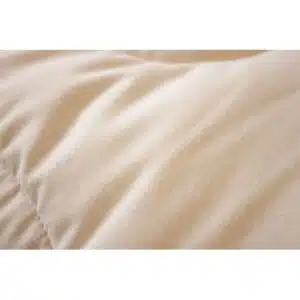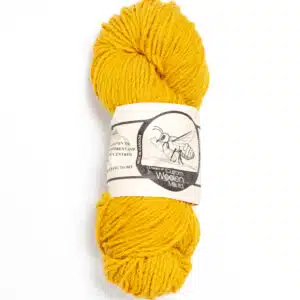Here at the Mill, we are in the middle of a deep deep winter freeze. It's a little depressing. Canadian winters are long at the best of times and they feel particularly long when you can't step outside without about 10 lbs of wool insulating you from the world. But there is always spring to look forward to. I often find that the best way to combat the winter blues is to plan a garden and order seeds; dreaming of having my hands in the dirt is almost as therapeutic as the real thing! Perhaps you'ld like to do a little garden dreaming too?
While we've always kept a few dye plants in our house perennial garden, growing bigger dye gardens is something we've only started working on over the last five years. Five years of gardening doesn't give you a ton of experience, however, in our five kicks at the can, there are definitely starting to be some patterns in our garden design considerations. As we develop the natural dye gardens for our Field & Forage Yarn line, there are four main things that we generally consider: the dye colour pallet that we would like to achieve, what known dye plants grow well in our climate, how much colour they produce, and how they contribute to annual or perennial gardens.
About 75% of our annual garden space is dedicated to plants that grow really well and produce a lot of colour like marigolds and japanese indigo. Annual gardens are a lot of work and, economically, it's not feasible to baby tender plants along. Of course, we have a little passive solar greenhouse to get things started but once they are planted out, short of a bit of watering and weeding, they need to be able to survive on the Canadian prairie. With the remaining 25% of the space we try out different plants that look really great and produce interesting colours, but perhaps not in great quantity or not super reliably in our climate, such as hopi black dye sunflowers - last year they got knocked out by a deep freeze before we could get a colour harvest.
Our perennial garden is a different story. It's designed in the fashion of a permaculture style food forest, where species diversity and interdependence is the name of the game. In it we grow many different dye plants in small quantities interspersed among different fruit trees and bushes, medicinal plants, and showy pollinator attractors. Some are great for creating dye baths while others are better for eco-printing fabric. They are harvested in ways that promote their continued growth year after year so that they continue contributing to the overall health of the garden. Perennials can also take a few years to get established and produce good colour. For example, madder root requires two to three years of growth before it yields a good red colour. As a result, perhaps only a few skeins of yarn per year get dyed from each of the perennial dye plants, if it is even possible to harvest them yearly. Still, the perennial garden is a beautiful thing that fills in and looks more vibrant with each passing summer.
My favourite resource for getting started with dye plant gardening is definitely The Dyer's Garden by Rita Buchanan. It's well organized, compact, and most of the plants she discusses are a good fit for our growing region. It's complete with notes on growing the plants, harvesting them, and dyeing with them. It also includes pictures of the plants and dyed yarn samples. Her other book, A Weaver's Garden, talks about a much larger variety of plants, all related to textiles but not all dye related. It's a great part of any textile library but, in my opinion, it's not as good for someone just getting started.
When it comes to seeds, because dye plants are not all commonly grown (some are not particularly pretty on their surface), I've had to source around quite a bit. For more common seeds - dye plants that are also common garden ornamentals - such as marigolds and zinnias, I have found West Coast Seeds in BC to be a great option. Some plants that are more specifically grown for dyeing, such as madder and hopi black dye sunflowers, I usually get from Strictly Medicinal Seeds in Oregon. Japanese indigo I have found to be a tricky one when it comes to germination. I have had the best luck with seeds sourced directly from Ricketts Indigo in Indiana, the company of Roland and Chinami Ricketts, two world renowned japanese indigo experts.
If you're thinking of starting your own natural dye garden or incorporating dye plants into a current garden, then I hope this blog is helpful in setting you on your way, dreaming about a summer's colour bounty in the dead of winter. There is still time to sign up for our Natural Dye Club too, it's a great introduction to the basics of natural dyeing and, in this year's project, foraging for colour. Of course, if you are in need of some dyed yarn now for your winter knitting projects - another great way to combat the winter blues - then check out our selection of Naturally Dyed Yarns and let them warm both the body and spirit!












